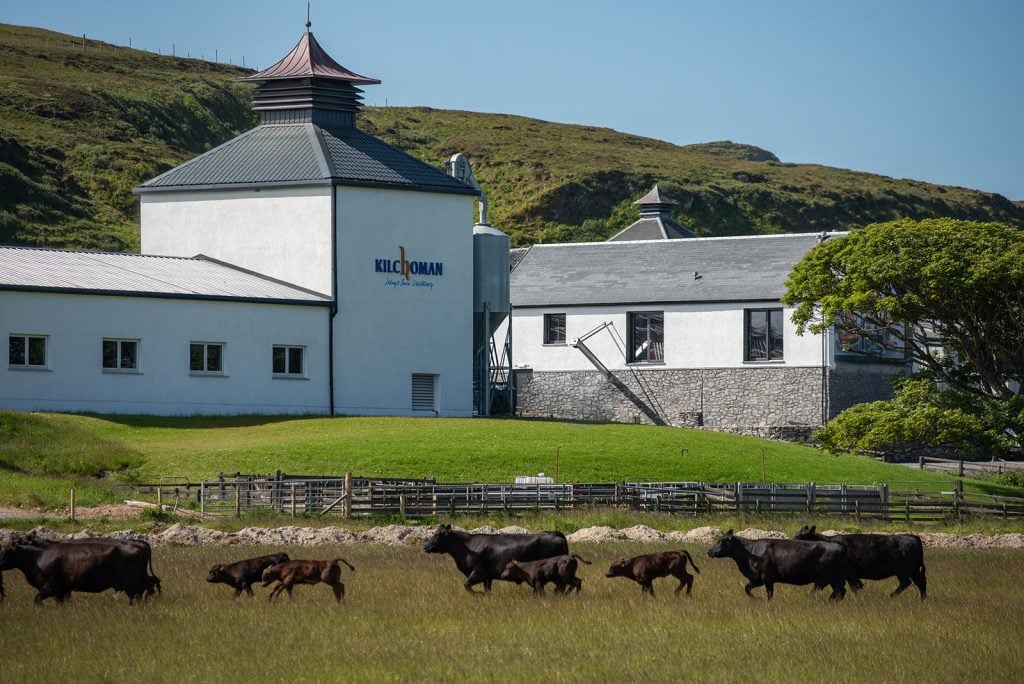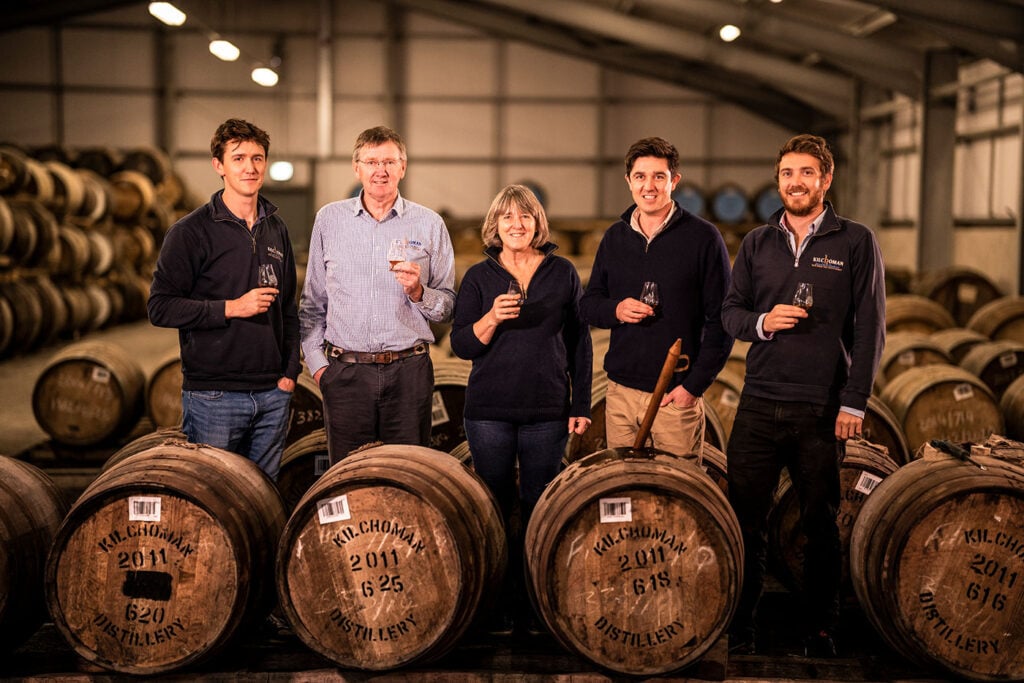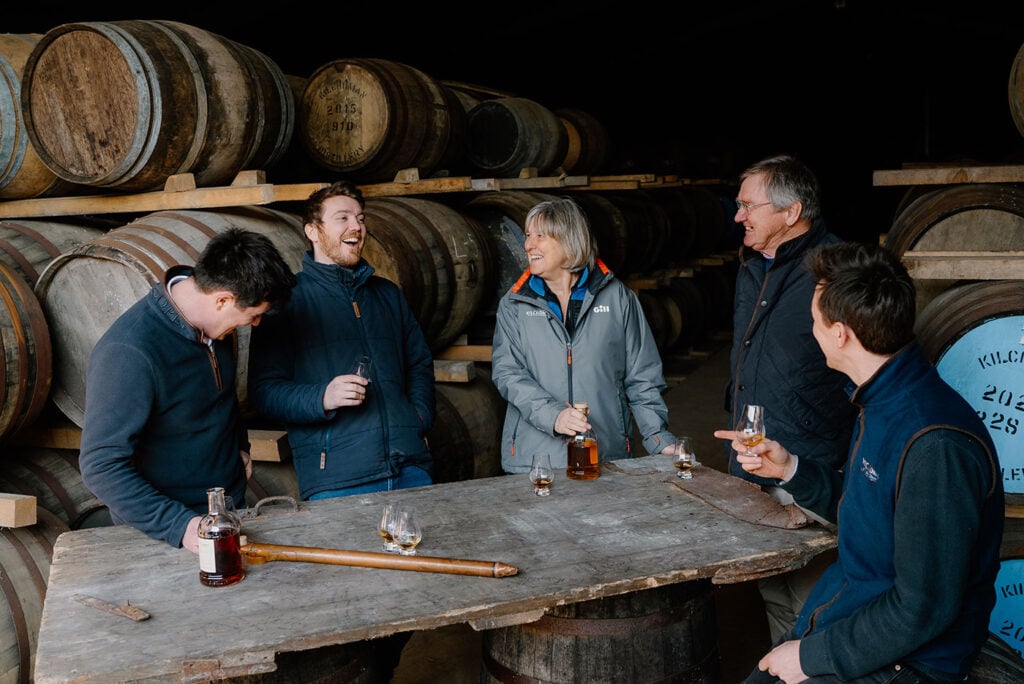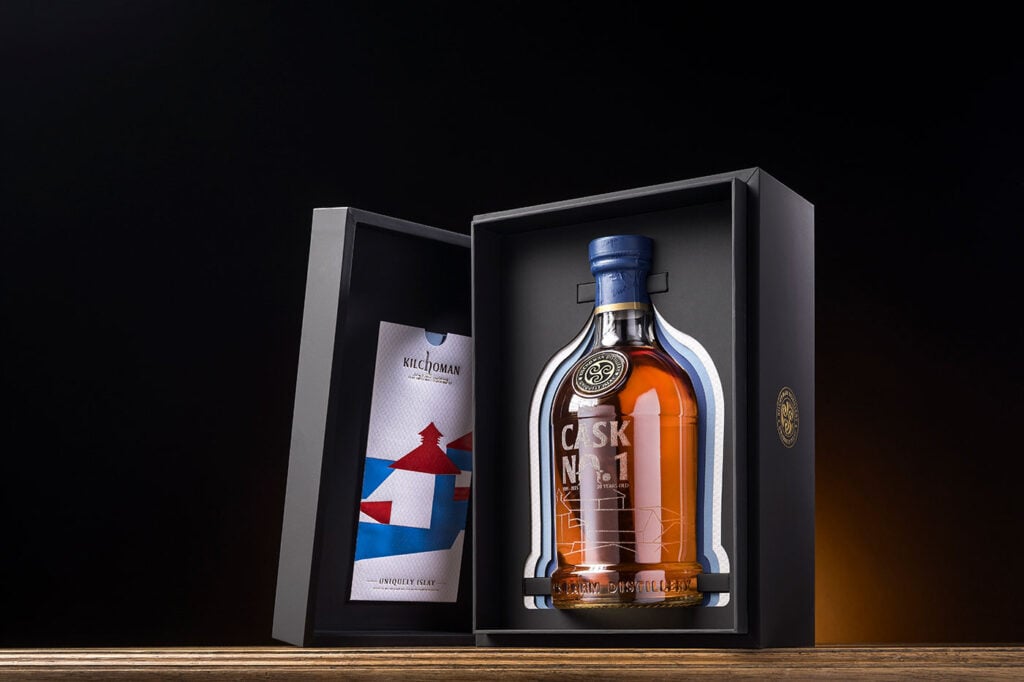As 2025 marks 20 years of Kilchoman, we’re looking back at the story of the Islay farm distillery that went from plucky outsider to island mainstay.
If a stranger wandered onto Islay in 2005 and said, “I’m building a farm distillery”, the locals might have smiled politely and wondered how long they’d last. After all, the island had not welcomed a new distillery in 124 years. And distilleries here are not just buildings. They are clans. Institutions with fan clubs larger than some religions.
So when the Wills family brought Kilchoman Distillery to the fringes of Rockside Farm, it arrived as a curiosity. A scrappy little project with five staff, two stills, a malting floor, and a belief that control over every part of the process would mean control of flavour itself.
Twenty years on, the little farm distillery that people once treated like a novelty has grown into one of Islay’s defining whisky makers. Not by abandoning the traditions that made it special, but by doubling down on them.
This is the story of the upstart that stuck around.

The Kilchoman Distillery on Islay
A distillery built to solve a problem, not fill a gap
Back in the early 2000s, Anthony Wills wasn’t trying to start a trend. He was trying to fix a problem. As an independent bottler, he had spent years hunting for stock from older distilleries, fighting for casks with character and provenance. The supply tightened. Access shrank. So he asked himself a big question: what if he started a distillery built from the ground up to make the whisky he wanted to bottle?
This wasn’t a whisky boom period. The single malt trend was gathering pace, but it hadn’t reached real velocity. Either side of Kilchoman’s founding, you have Arran (1996), then Ardnamurchan and Annandale (2014). And there were easier places than Islay. There were simpler business models than growing barley in the wild, windy, rugged Atlantic west and hand-turning malt. But if you want control, you compromise on easy.
The Wills family believed the farm distillery model that shaped Scotch in the 1800s still had something left to give. So, in 2004, Anthony and his wife, Kathy, moved to Islay. They picked up the keys to Rockside Farm and began building a distillery that would become a barley-to-bottle operation. The family connection ran deeper: Kathy’s grandparents had lived on Islay since the 1930s.
The new chapter in the island’s whisky story was a gamble, but an informed one. And Islay is the kind of place that rewards a bit of guts.

Meet the family
Farm whisky, Atlantic weather, and stubborn conviction
Kilchoman’s refusal to compromise defines it. The process is manual, tactile, and responsive. Human. The stills are small on purpose. A malt floor was non-negotiable. The peat had to be Islay peat. The Wills set the cut points on day one. They have never moved. Anthony credits them as a key driver in creating the signature Kilchoman character.
It isn’t a distillery designed for scale. It’s designed for flavour. Efficiency and expansion are something you can tweak from a solid foundation. Adapting the moisture levels, malt depth, turning schedules and peating times in malting, for example. But the philosophy remains constant. They built more equipment. Gone from 100,000 litres to 600,000 litres per year. From 100 tonnes of barley to 400. But every element stayed the same size and shape.
That’s how you maintain consistency at six times the original output. No industrial shortcuts, no scaling irresponsibly. The distillery might have bet the farm, but it has never neglected it.

Burning peat at Kilchoman on Islay
The upstart becomes a peer
No second site is planned. Anthony says, “The expanded production means we now have a bit of freedom to explore a few new styles, but Kilchoman is the focus, so there won’t be a second production site coming.”
What comes next is more of the same. That means growing more barley, expanding the malt floor, bottling everything on-site, investing in the island, and remaining a major local employer. Anthony says that they’re always open to experimenting; new barley varieties, peating levels, yeast varieties and cask types… “Watch this space!”
The original blueprint was good enough, so why change it? Kilchoman now exports to more than 70 countries. It makes complex, balanced, maritime drams that can genuinely stand beside older Islay neighbours.

How many families do you know that could run a distillery together?
A true family business
Perhaps the most impressive thing about Kilchoman is that the Wills family remains at its core, two decades on.
Since 2005, Kilchoman has grown from five people to fifty, but Anthony still leads production and blending. Kathy oversees staffing and the visitor centre. Their sons George, James and Peter handle global sales and marketing.
Asked what surprised them most about building a multigenerational whisky brand, Anthony says: “That we all get on pretty well… Most of the time!”
Kilchoman knows exactly what it is 20 years in. For the next 20 years, the goal is this: “To be held alongside the other Islay greats.”

The 20th anniversary bottling in all its glory
20 years of Kilchoman means a 20-year-old whisky!
How does any distillery mark a banner year? With whisky, of course. In spring came four special vattings: two 14-year-olds, a 15-year-old, and an 18-year-old. But the big 20 demands a 20-year-old whisky, and Kilchoman delivers. From Cask No. 1, no less.
On 14 December 2005, Kilchoman first filled a whisky into a cask and, over the years, the distillery has bottled it at 3, 10 and 17 years old, raising more than £20,000 for Scottish charities. Now we have the first-ever 20-year-old release, but it’s available solely through an exclusive prize draw. Why? “Selling it outright would put it out of reach for many of the people who have supported Kilchoman from the beginning… this approach gives everyone an equal chance, not just collectors or investors with deep pockets,” Anthony explains.
The brand will donate a portion of the online entries to local Islay charities. The bottle itself comes in a tactile, layered, handcrafted casing with a depiction of the distillery skyline engraved on Islay and a handwritten note from Anthony.
Only one person will win it — and the distillery hopes they open it.

Here’s to another 20!
20 years of Kilchoman Distillery
The greatest compliment anyone can pay Kilchoman is that it no longer feels “new”. It’s part of the landscape.
And it proves that the old ways can still build a future. That authenticity can scale. That a farm distillery can grow into a global brand without losing the mud under its fingernails.
Kilchoman began as a gamble on tradition. Twenty years later, that gamble looks less like luck and more like foresight.
